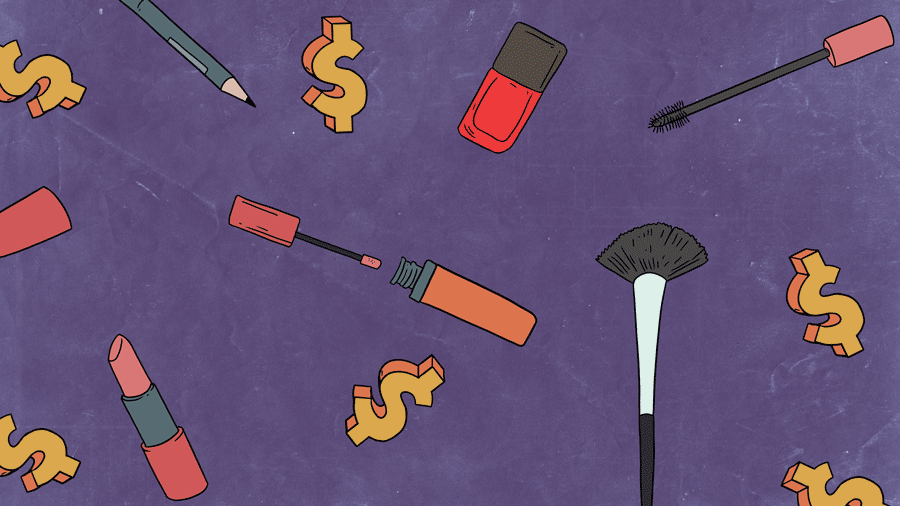More time at home over the past year and a half means more time for self-care, and venture capital investors are taking notice of the increased consumer interest in beauty and wellness.
Subscribe to the Crunchbase Daily
Venture-backed startups in the beauty and cosmetics industry, including brands and marketplaces, have raised around $1.9 billion in funding so far this year in more than 150 deals, Crunchbase data shows. That’s approaching the nearly $2.1 billion raised by VC-backed beauty and cosmetics companies over 250 rounds in all of 2020. Back in 2016, VC-backed companies in the beauty and cosmetic industry had raised less than $780 million across 278 rounds of funding.

There are a few reasons for the surge in investor interest in the beauty space.
For one, M&A activity in the sector has picked up, with beauty companies generating sizable returns. At the same time, the COVID-19 pandemic has caused more shoppers to buy beauty products online rather than in stores, boosting revenue for direct-to-consumer beauty brands, and increasing their valuations.
“A lot of money is being made in the category,” said Caitlin Strandberg, a partner at the venture capital firm Lerer Hippeau who has invested in skincare company Topicals and the wellness brand Cure Hydration. “Companies with billion-dollar valuations. There’s much more funding, there’s much more M&A activity in the space, the investments are looking more like venture returns than ever before.”
Beauty is not an industry that has historically received much attention from traditional venture capital. As True Beauty Ventures co-founder Cristina Nuñez puts it, traditional VC wants outsized returns over a faster period of time. Her firm focuses on investing in startups in the beauty and wellness space.
Beauty, being a consumer packaged goods category, is inventory-intensive and doesn’t quite fit the typical venture investment profile. So traditional VCs who didn’t have a background in beauty had more of a “wait and see” approach to investing in the field, usually looking for product-market fit and other proof points before investing.
“I do think when you look at the tech return profile, that doesn’t really exist in beauty,” Nuñez said. “There are very few assets that have historically scaled at that size and sold to strategics.”
Also, beauty hasn’t been a category that’s well understood by many investors, given how male-dominated the venture capital industry is, according to Strandberg.
A growing market
But a confluence of factors have made companies in the beauty and cosmetics space to more attractive to venture investors.
Investors can now put money into areas they’re more familiar with, such as direct-to-consumer models, marketplaces and social commerce, according to Nuñez.
The category has also expanded beyond strictly haircare, skincare and color cosmetics to include wellness brands, such as sexual wellness. And since the barrier to entry has never been lower—indie brands can now launch online with a DTC model instead of relying on retail partnerships—new beauty brands are popping up seemingly daily, which means more companies looking for capital.
“Where there’s a need for capital, there’s VC interest, so there’s been tremendous growth in indie brands that are looking for capital,” Nuñez said.
While the COVID-19 pandemic adversely affected color cosmetics (think eyeshadow, blush and the like) because people weren’t going out and socializing as much, many consumers turned to skincare, haircare and wellness brands.
And when retailers closed their doors or limited their hours because of the pandemic, shoppers—even those of generations who typically didn’t buy much online—turned to the internet.
“It’s a category that’s moved online en masse, I’d say, and there’s more rapid customer adoption than there was previously,” Strandberg said.
Exits
M&A activity has also had an effect on the attention on the beauty industry, according to Strandberg. After all, there’s more incentive to invest in a sector if that sector is sought after by acquirers.
Kylie Jenner’s Kylie Cosmetics and Kim Kardashian’s KKW Beauty, both digitally native beauty brands, were acquired by cosmetics giant Coty for majority and minority stakes, respectively, giving them billion-dollar price tags. Estee Lauder also shelled out $1.7 billion for Korean beauty Have & Be Co. in 2019 and $1.5 billion for Too Faced Cosmetics in 2016.
Venture-backed companies like Glossier have also raised at billion-dollar valuations, turning investors’ attention toward beauty. That attention is reflected in how much money is being raised by the sector: The median amount of money raised by VC-backed companies in the beauty and cosmetics categories hovered between $1 million and $1.4 million from 2016 to 2020, Crunchbase data shows, but jumped to $3.2 million in 2021.
Just this week, the beauty company Merit raised a $20 million Series A led by L Catterton with participation from Sonoma Brands and Marcy Venture Partners, the VC firm founded by rapper and businessman Jay-Z and Roc Nation co-founder Jay Brown. The funding round is the largest Series A raised by a VC-backed company in the beauty and cosmetics space so far this year, according to Crunchbase data.
But beauty investing is still different from traditional venture investing, according to Nuñez. Those large returns come if you can pick the right winners—it helps if you have beauty expertise for that—but it’s not a growth-at-all-costs industry.
“It’s just a different mindset that traditional VC has had, and to play, and play successfully, in beauty, you need to have that,” Nuñez said.
For the past year and a half, skincare and haircare companies have been seeking the most capital, according to Nuñez. But since more people are out and socializing now, she expects color cosmetics companies to again start reaching out for capital.
“When you look at the overall industry, color cosmetics makes up the bulk of the industry, so it’ll be interesting to see how that ticks up again,” she said.
Illustration: Li-Anne Dias

Stay up to date with recent funding rounds, acquisitions, and more with the Crunchbase Daily.









![Illustration of 50+ woman on smartphone. [Dom Guzman]](https://news.crunchbase.com/wp-content/uploads/2021/01/Femtech_-300x168.jpg)
67.1K Followers